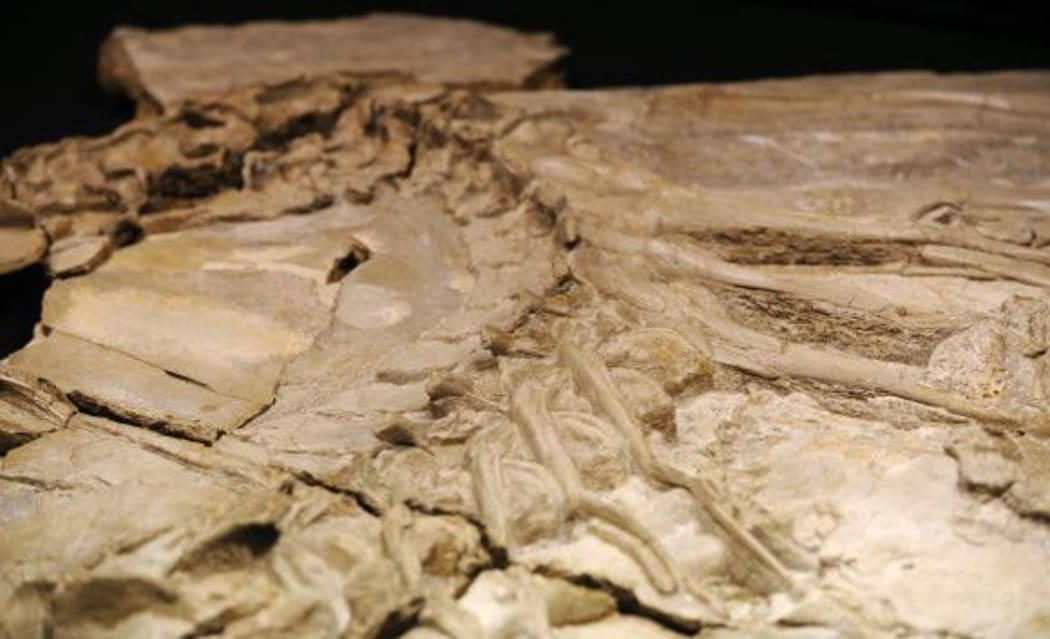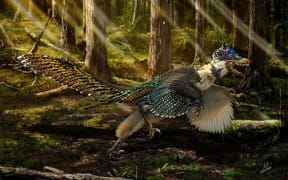Scientists have described a 125-million-year-old mammal whose fossilised remains have been unearthed in Las Hoyas Quarry in central Spain as an "exceptionally cute" ball of fur.

Concavenator corcovatus - dinosaur fossils found in the deposit of the Hoyas, in the Spanish province of Cuenca, in 2010. Photo: DANI POZO/AFP/Getty Images
The fossil, called Spinolestes xenarthrosus, has been so well preserved the scientists have been able to make a detailed analysis of the remains.
They say the ancient rat-like creature has been preserved in exquisite detail, providing the oldest-known record of hedgehog-like spines and mammalian internal organs.
The discovery is published in the journal Nature.
Study co-author Dr Zhe-Xi Luo, from the University of Chicago, said Spinolestes was a "spectacular find".
"It is stunning to see almost perfectly preserved skin and hair structures fossilised in microscopic detail in such an old fossil. This Cretaceous furball displays the entire structural diversity of modern mammalian skin and hairs."
The specimen's liver, lung and diaphragm tissues were found intact, as well as fur, spines and scales.
Fellow author Thomas Martin of the University of Bonn said usually only mineralised hard parts like the bones are seen in palaeontology, but never soft parts in such detail.
He said it was known that there was hair on mammals at the time.
"But you usually only see impressions of the fur in the fossil. Here the hair is preserved down to the cellular level."
The creature was small, somewhere between the size of a mouse and a rat, and weighed about 50-70g.
The scientists say it had big ears and a pointy face, with a short mane and a soft fuzzy belly. It was probably ground dwelling and ate insects.
"It is cute, very cute," said Professor Martin. "It looked like a modern spiny mouse, which is also quite cute."
But in addition to its adorable attributes, Spinolestes also had a defensive side.
It had small spiky spines on its lower back, as well as scales similar to an armadillo's, helping it to fend off predators.
"If a predator comes and bites it on the back, then the spines are easily shed and the predator is left behind with a mouth full of spines, so it can escape," Professor Martin said.
Potential predators probably included small dinosaurs, which have been unearthed from the same site in Spain.
Crocodiles, salamanders, frogs, birds and insects have also been found there.
And while central Spain is hot and dry today, 125 million years ago it would have been a lush tropical wetland.
"These animals lived in a swampy environment comparable to the modern Everglade system," Professor Martin said.
The creature was discovered by a team led by Angela Buscalioni from the Autonomous University of Madrid, in Spain.
- BBC


